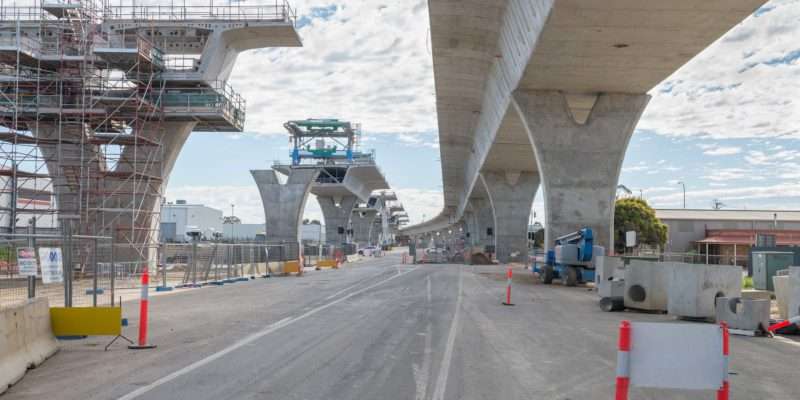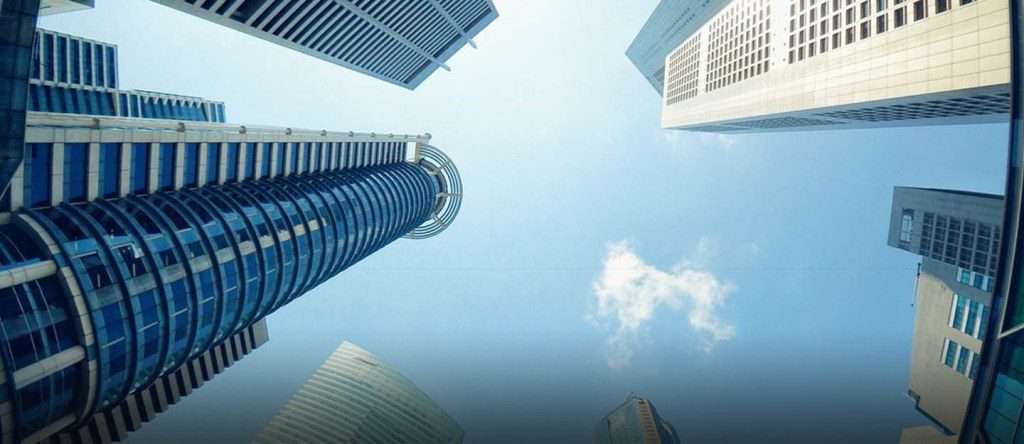The five basic types of vertical construction
The five basic types of vertical construction,
The vertical construction of the building plays an important role in the overall structure.
A combination of different materials and construction techniques are used to create vertical structures, making them one of the most important building elements.
And understanding these different types of vertical construction can help you make an informed decision when building a new structure.
This article will explore five basic types of vertical construction,
including masonry, steel, wood, lightweight concrete, and pre-engineered structures.
By understanding each type, you can choose the best solution for your construction project needs
What is vertical construction?
Vertical construction is the building of structures from the ground up rather than the horizontal methods such as prefabricated structures.
It uses different materials and components to create everything from commercial buildings to multi-family residences.
Vertical construction is the most sustainable form of construction
because it can be designed according to the specific location, climate, and budget.
It also provides a safer form of construction
because it is less likely to have structural problems or fail in the event of strong winds or earthquakes.
There are five basic types of vertical construction projects.
These are single-family housing, multi-family housing, commercial buildings,
industrial buildings, bridges and tunnels.

Each of these vertical construction methods requires a unique set of materials
and components and requires a certain level of expertise from the workforce.
Single-family dwellings are usually smaller, one-story homes built of various materials,
including wood, metal, and concrete.
These structures can be divided into sections and may feature a variety of exterior finishes, such as siding, stucco, and stone.
The five basic types of vertical construction
Multi-family dwellings are usually larger, multi-story dwellings built from a combination of materials.
These buildings include multiple units connected by a common staircase and corridors.
Common materials used in multi-family dwellings include masonry, metal, wood, and concrete.
Commercial buildings are large, multi-storey structures that accommodate many types of businesses.
These structures often feature a variety of materials, including metal, masonry, and wood.
In addition, it can be divided into sections and features a variety of exterior finishes.
Industrial buildings are large, multi-storey structures that accommodate manufacturing and assembly operations.
These structures are usually built of metal, masonry and wood.
In addition, it can be divided into sections and has different exterior finishes.
Bridges and tunnels are vertical structures built from various materials, including steel, concrete and masonry.
They are usually built over bodies of water and used for transportation,
and may also feature a variety of exterior finishes.

Masonry
Masonry is one of the simplest forms of vertical construction
and is used in a variety of projects, from buildings and bridges to fences and retaining walls.
Masonry is a system of constructing buildings and structures from individual units made of stone, brick and concrete blocks held together with mortar.
It has been in use for thousands of years and remains one of the most popular and reliable forms of vertical masonry.
Masonry walls are constructed by placing individual units in an interlocking pattern and bonding them with reinforcing materials such as steel rods and wire.
In many cases, the walls are covered with a layer of stucco or plaster to protect them from weather.
Masonry is a cost-effective and durable form of construction
that can be used for both structural and aesthetic purposes.
The masonry’s versatility makes it ideal for many projects,
including load-bearing walls, chimneys, and fireplaces.
Building structures can be designed according to the specific needs
and requirements of a project, making them suitable for both residential and commercial projects.
The five basic types of vertical construction
Masonry can also be used in special projects, such as retaining walls and foundations.
Masonite is inherently fire and water resistant, making it an ideal material for exterior buildings.
Masonry walls can also be used to create soundproofing,
thermal insulation, and other elements needed for commercial and residential buildings.
And with construction, it is important to choose the right materials
and ensure that the structure is built properly.
The key is to make sure that all of the pieces fit together perfectly and that the mortar is applied correctly.
It is also important to ensure that the masonry is properly reinforced,
as this will help ensure that the structure is strong and durable.
Freemasonry is a timeless form of masonry that has stood the test of time,
with many structures built hundreds of years ago still standing today.
It is an incredibly versatile material that can be used to meet the unique needs of any project.

steel
Steel is one of the most widely used materials in modern vertical construction.
It is strong, durable, and relatively easy to work with compared to other materials,
making it a popular choice for many applications.
In this section, we will discuss the basics of steel
and its advantages and disadvantages as a vertical construction material.
Steel is an alloy of iron and other elements such as carbon,
manganese, phosphorus, sulfur and silicon.
It is an ideal material for bridge construction because of its low weight,
strength and flexibility, allowing bridges to be built with a greater span and to bear higher loads.
Steel is also resistant to rot and corrosion, which will last longer than other materials.
Steel is also a popular choice for multi-storey buildings.
It is light in weight, which makes it easier to transport and install,
and the strength-to-weight ratio allows for the construction of tall buildings.
The steel can also be prefabricated,
which means it can be cut and shaped in factories before installation, saving time and money on the construction site.
Thanks to its high strength and low weight, steel is also popular for building facades.
Steel cladding is often used to create an attractive and durable finish for the exterior of buildings,
and its modular nature makes it easy to replace and repair.
The five basic types of vertical construction
However, steel has some drawbacks,
it is expensive compared to other materials such as wood and concrete and is less fire resistant than other materials.
It is also subject to galvanic corrosion when exposed to water and other elements, which means it needs to be properly protected.
All in all, steel is a popular and versatile material for vertical construction.
Its light weight, strength and flexibility make it ideal for bridges,
buildings and facades, while prefabrication capabilities reduce construction time and costs.
Its main drawbacks are its cost and susceptibility to corrosion,
but these can be remedied with proper protection and maintenance.

wood
Wood is one of the oldest and most widely used forms of vertical construction.
It can be used in many structures, from residential homes and commercial buildings to bridges and other large-scale infrastructure projects.
Wood is usually chosen because of its natural strength,
cost-effectiveness, and relative sustainability compared to other materials.
Lumber is usually constructed with wooden beams and posts connected by fasteners such as screws, nails and screws, or gluing and riveting.
Then the foundation, whether concrete or a wooden system of beams and beams,
supports these beams and columns.
Depending on the application, the wood can also be treated with chemicals to increase its longevity,
such as pressure treatment and staining to protect against the elements.
And when it comes to costs and longevity, wood is a good choice for vertical construction.
It is relatively inexpensive compared to other materials and generally easy to work with,
making it an attractive option for those who may need to gain experience in construction.
On the other hand, wood requires maintenance to prevent rot and other damage and must also be sealed regularly to protect it from the elements.
Additionally, wood is less robust than other materials when it comes to carrying heavy loads and may be more prone to failure.
In general, wood is a popular choice for vertical construction due to its affordability,
availability, and relative ease of use.
However, it is still necessary to use it carefully to ensure a safe and durable structure.

Lightweight concrete
Lightweight concrete is a type of vertical construction that is becoming more and more popular due to its properties and applications.
It is a form of lightweight concrete relative to ordinary concrete,
and is usually made using a foaming agent or air-filling agent and lightweight aggregate.
Lightweight concrete has a wide range of potential applications compared to standard concrete and offers many advantages for its use in vertical construction.
Lightweight concrete has a lower density than conventional concrete,
ranging from 110-130 lb/cu ft, which is typically achieved by replacing part of the aggregate with expanded clay, shale, or slate.
Lightweight aggregates such as vermiculite, perlite, and pumice are also possible.
The advantage of using this material is that it can reduce the overall weight of the structure without affecting its strength.
Lightweight concrete also has a higher fire resistance due to its lower thermal conductivity.
It is also resistant to freeze/thaw cycles and has a more uniform material structure,
resulting in improved durability.

The five basic types of vertical construction
Another advantage of lightweight concrete for vertical construction is its ease of installation.
Lightweight concrete is often easier to place and form than conventional concrete due to its greater workability.
Lightweight concrete is also easier to transport and suitable for pump applications.
Using lightweight concrete also eliminates the need for tedious and expensive formwork,
which can add additional costs to a construction project.
In addition, lightweight concrete can also be used in green building projects.
Its low density and low thermal conductivity make it an ideal choice for energy efficient buildings.
It also has good acoustic properties, which makes it suitable for sound insulation applications.
Lightweight concrete is gaining popularity due to its many advantages in vertical construction projects.
Its ease of installation, durability, fire resistance, low weight,
and thermal efficiency make it an attractive choice for construction and engineering projects.

Pre-engineered structures
Pre-engineered structures are an attractive type of vertical construction because of their structural integrity, cost-effectiveness, and ability to quickly assemble.
They are constructed by combining various components,
such as columns, beams, trusses, and other components,
into building elements and then bolting and welding them.
Components of pre-engineered structures are usually made of steel,
which is a durable, strong and relatively inexpensive material.
This makes pre-engineered structures an ideal choice for construction projects that require a strong structure, but at an affordable cost.
In addition, due to the modular nature of the components,
pre-engineered structures can be easily changed, allowing for quick and easy structure customization and assembly.
Pre-engineered structures are often used for various purposes,
such as warehouses, churches, schools, offices, manufacturing plants, factories, and recreational facilities.
These structures are also ideal for providing shelter from natural disasters,
as they are designed to withstand extreme weather conditions such as hurricanes and earthquakes.
In addition, pre-engineered structures are fire resistant, which is important for any building.
In conclusion, pre-engineered structures provide an excellent option for vertical construction,
providing a cost-effective, structurally sound and quick-to-assemble solution.
With the ability to customize components, pre-engineered structures are ideal for a variety of applications,
including warehouses, churches, schools, offices, manufacturing plants, factories and recreational facilities.
In addition, these structures provide the added advantage of being fire and weather resistant,
making them an excellent choice for areas that suffer from natural disasters.
For more architectural news
The use of glass-reinforced plastics to improve the level of construction






